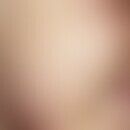Synonym(s)
Alopecia Scheueralopecia; Hairlessness due to chafing; Scrubbing ophthalmia
HistoryThis section has been translated automatically.
Freyschmidt-Paul, 2001
DefinitionThis section has been translated automatically.
Accidental-traumatic alopecia with hair breakage and inconspicuous hair root status caused by rubbing and scratching
You might also be interested in
EtiopathogenesisThis section has been translated automatically.
- Adults: Often based on social conflicts, secondary disease, anxiety or obsessive-compulsive disorders. Itchy skin diseases such as atopic eczema can also promote the development of trichoteiromania.
- Children: Among other things, adaptation disorders or trauma (child abuse).
- Infants: Due to the one-sided position of the head and by rubbing against the pad.
ManifestationThis section has been translated automatically.
Occurs in infants, children, adolescents and adults of all ages.
ClinicThis section has been translated automatically.
Flat alopecia (rarely several foci) with a slightly lichenified or inconspicuous scalp. Strictly limited to the artificially altered area. In contrast to trichotillomania (trillein = Greek for plucking), in trichoteiromania inconspicuous hair follicles are found in hairs that have remained standing, but brush-like, whitish hair tips (trichoptilosis). The scalp can be circumscribed as lichenified by the continuous abrasion artifacts. Picture as in the irritant acanthoma or in the lichen simplex chronicus.
DiagnosisThis section has been translated automatically.
Medical history, clinic, trichogram.
TherapyThis section has been translated automatically.
Clarification and treatment of the underlying cause.
LiteratureThis section has been translated automatically.
- Freyschmidt-Paul P et al (2001) Trichoteiromania. Eur J Dermatol 11: 369-371
- Hantash BM et al (2003) Traction alopecia in children. Cutis 71: 18-20
- Whiting DA (1999) Traumatic alopecia. Int J Dermatol 38 (Suppl1): 34-44
- Reich S, RT Trüeb (2003) Trichoteiromania. J Dtsch Dermatol Ges 1:22-28
Incoming links (1)
Alopecia, scouring alopecia;Disclaimer
Please ask your physician for a reliable diagnosis. This website is only meant as a reference.




